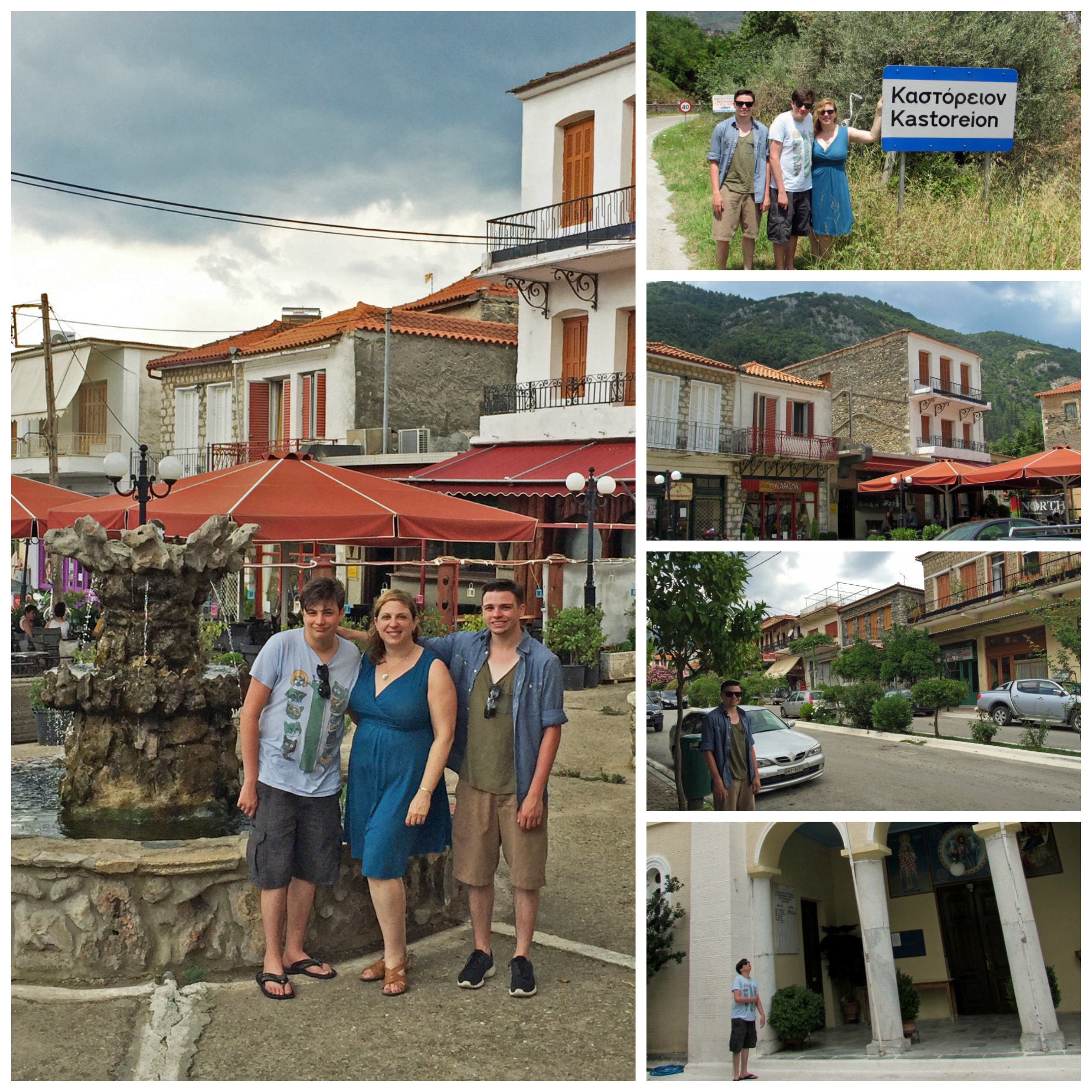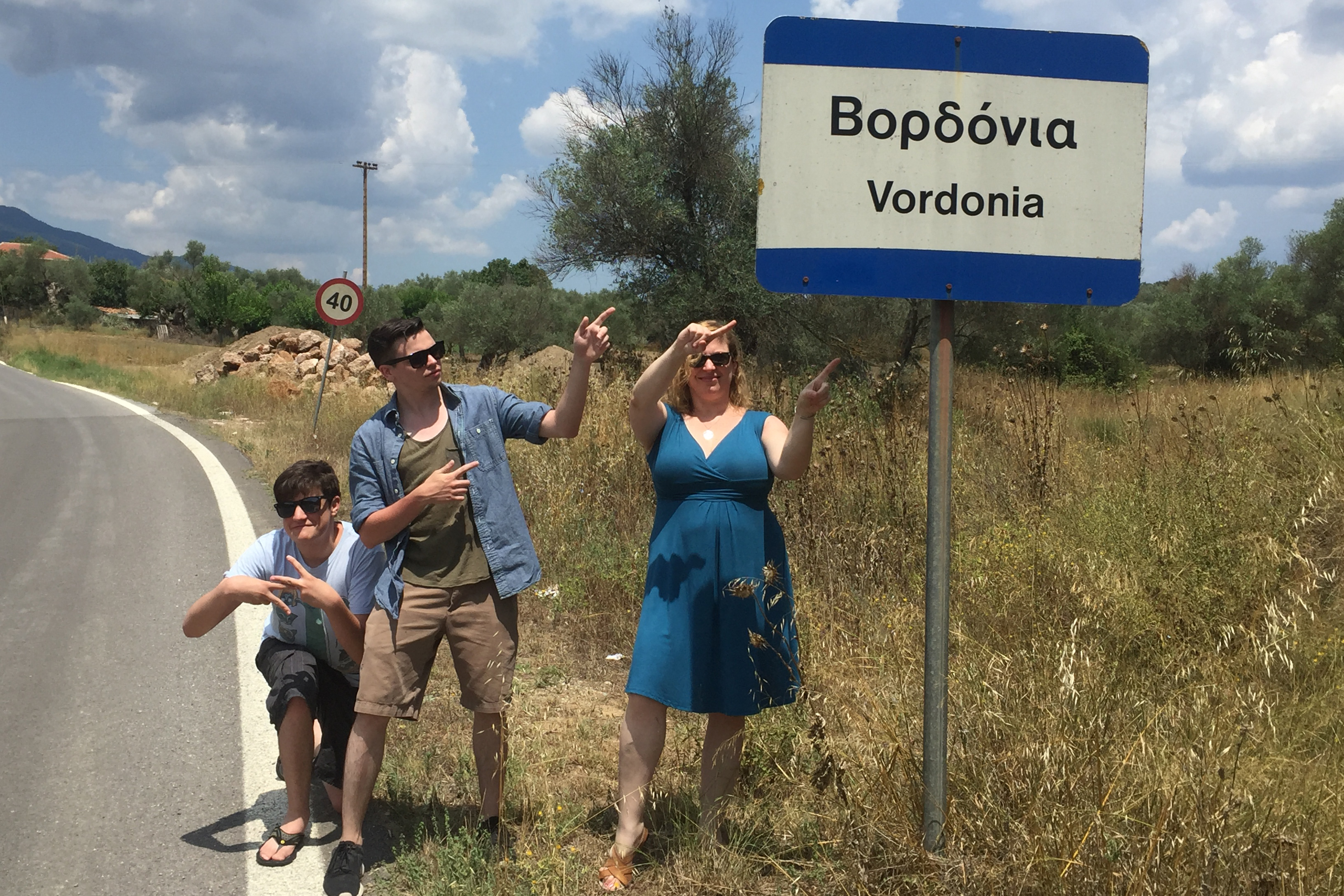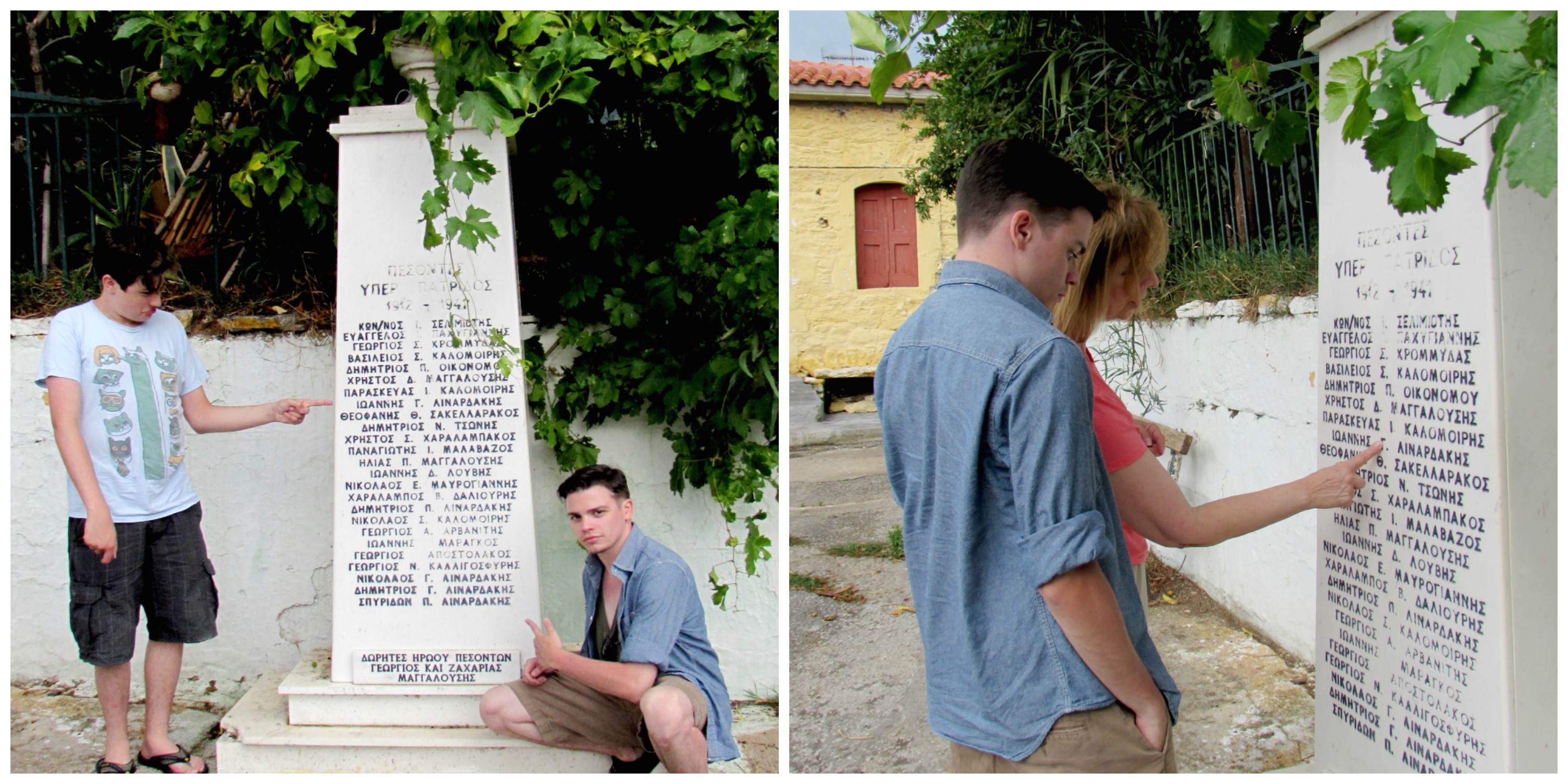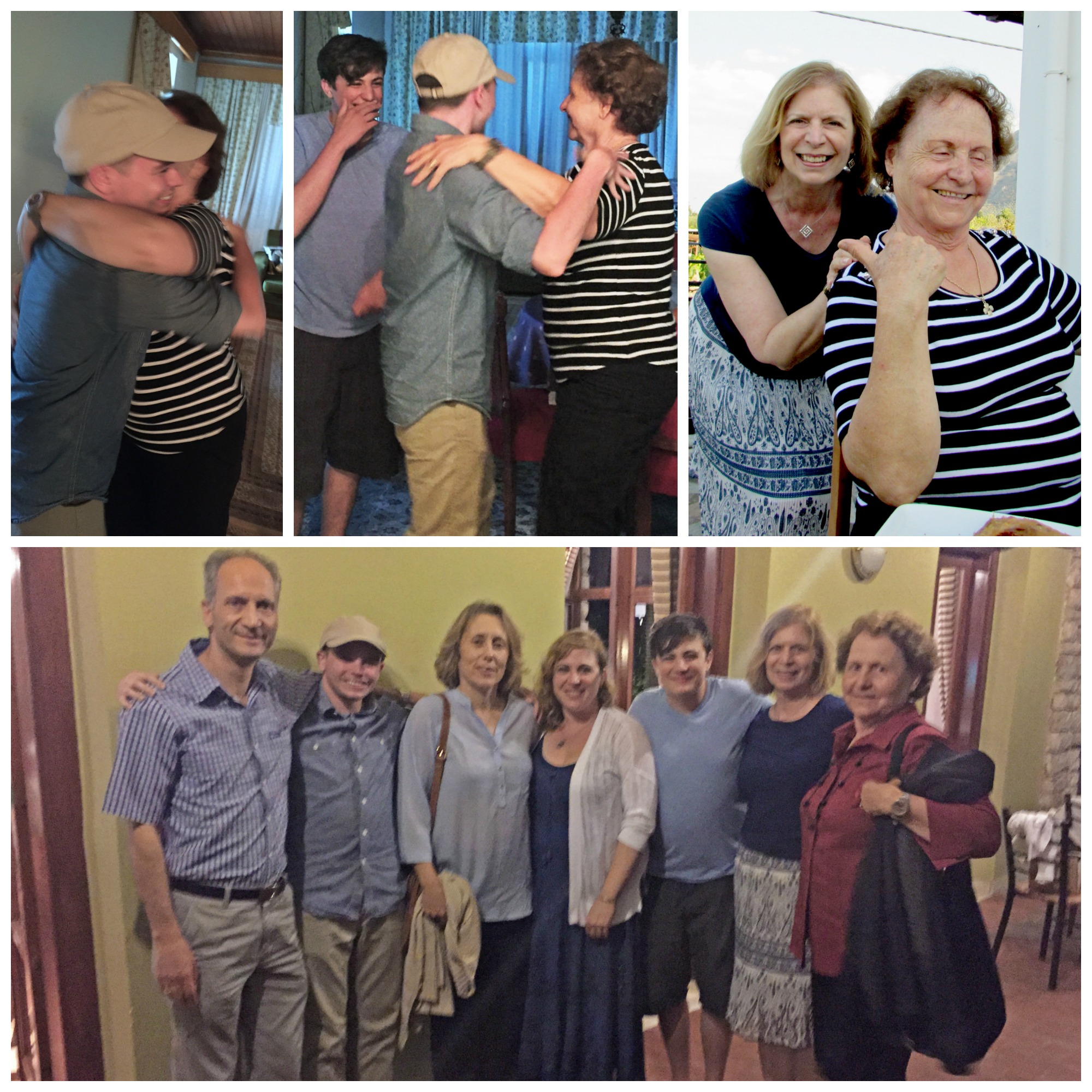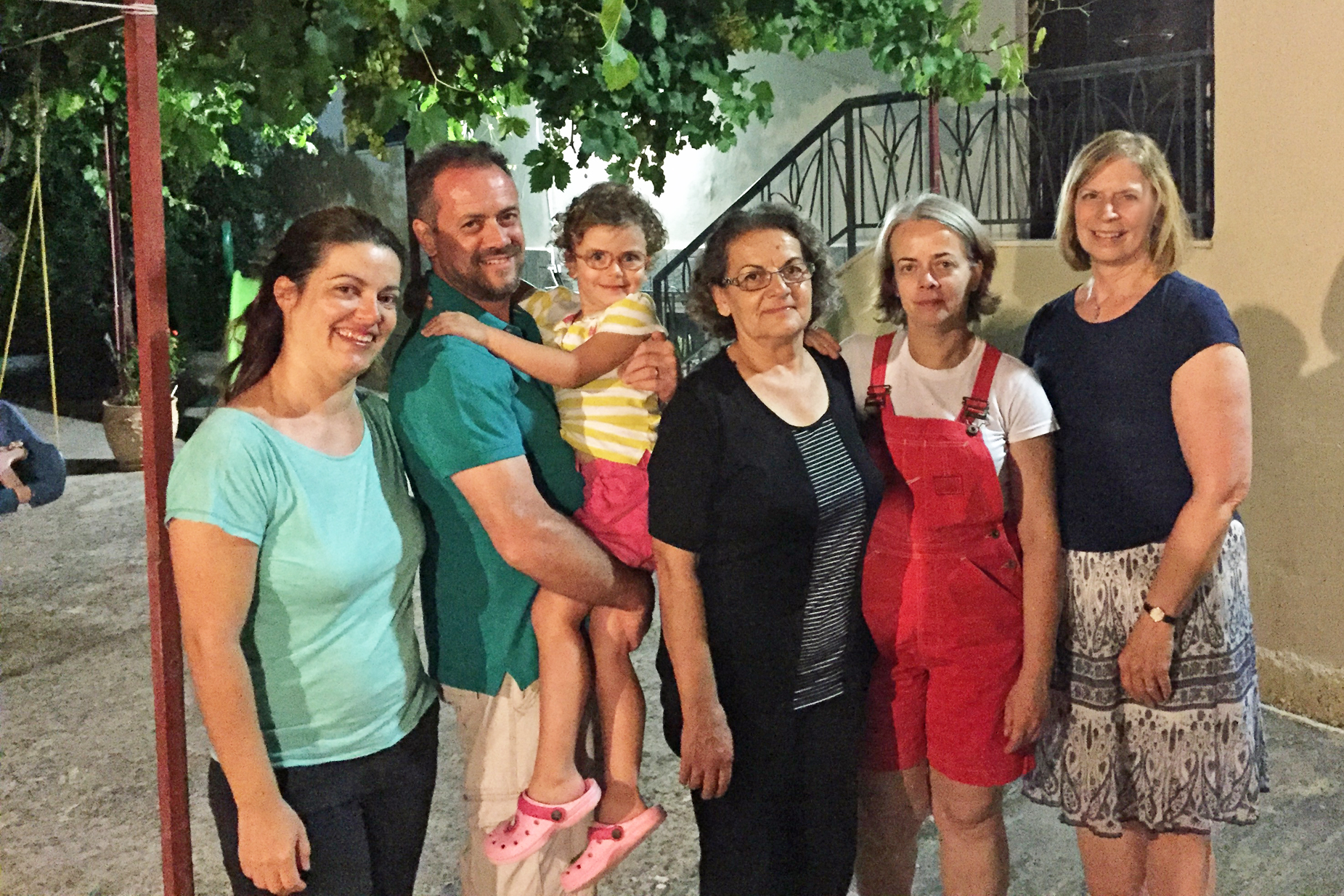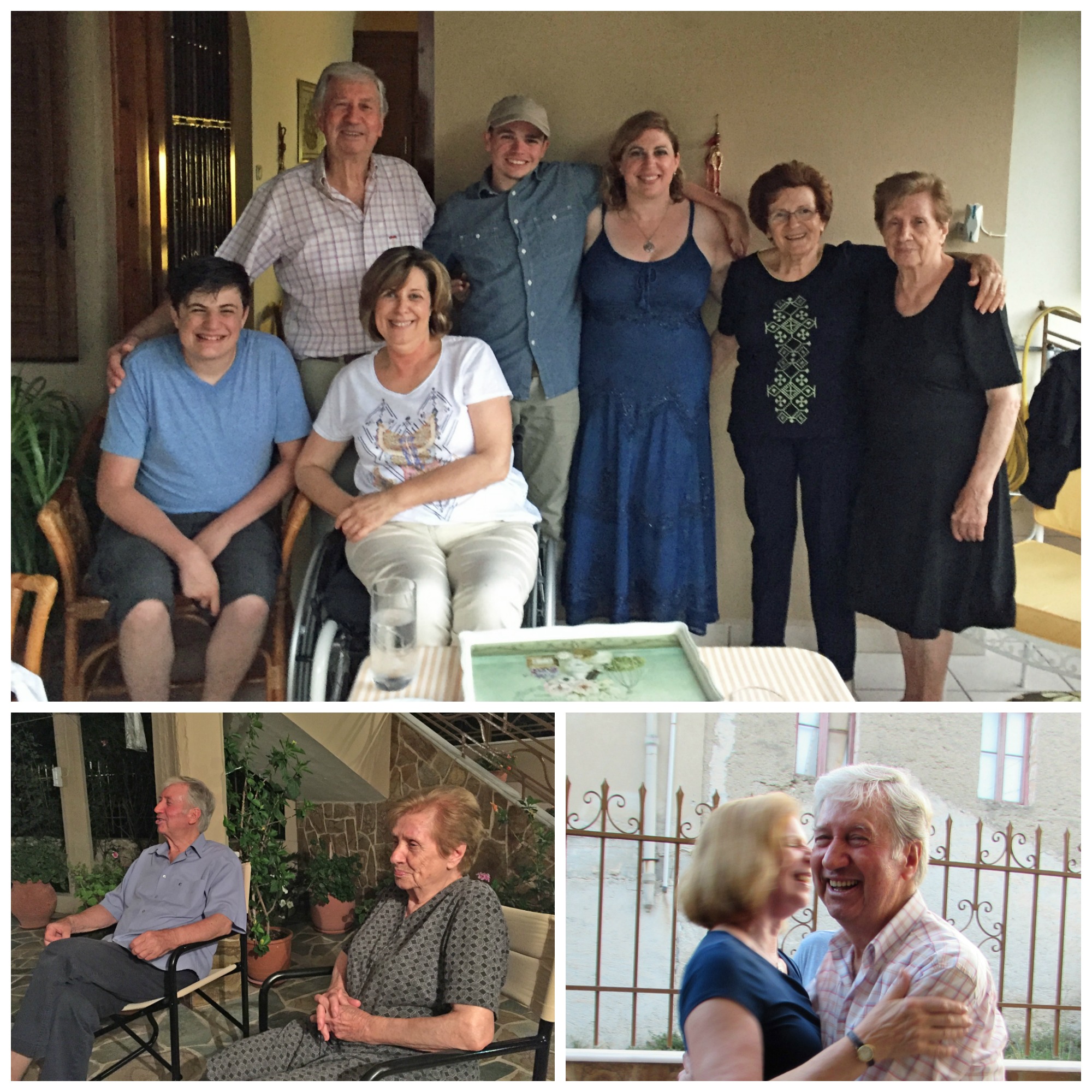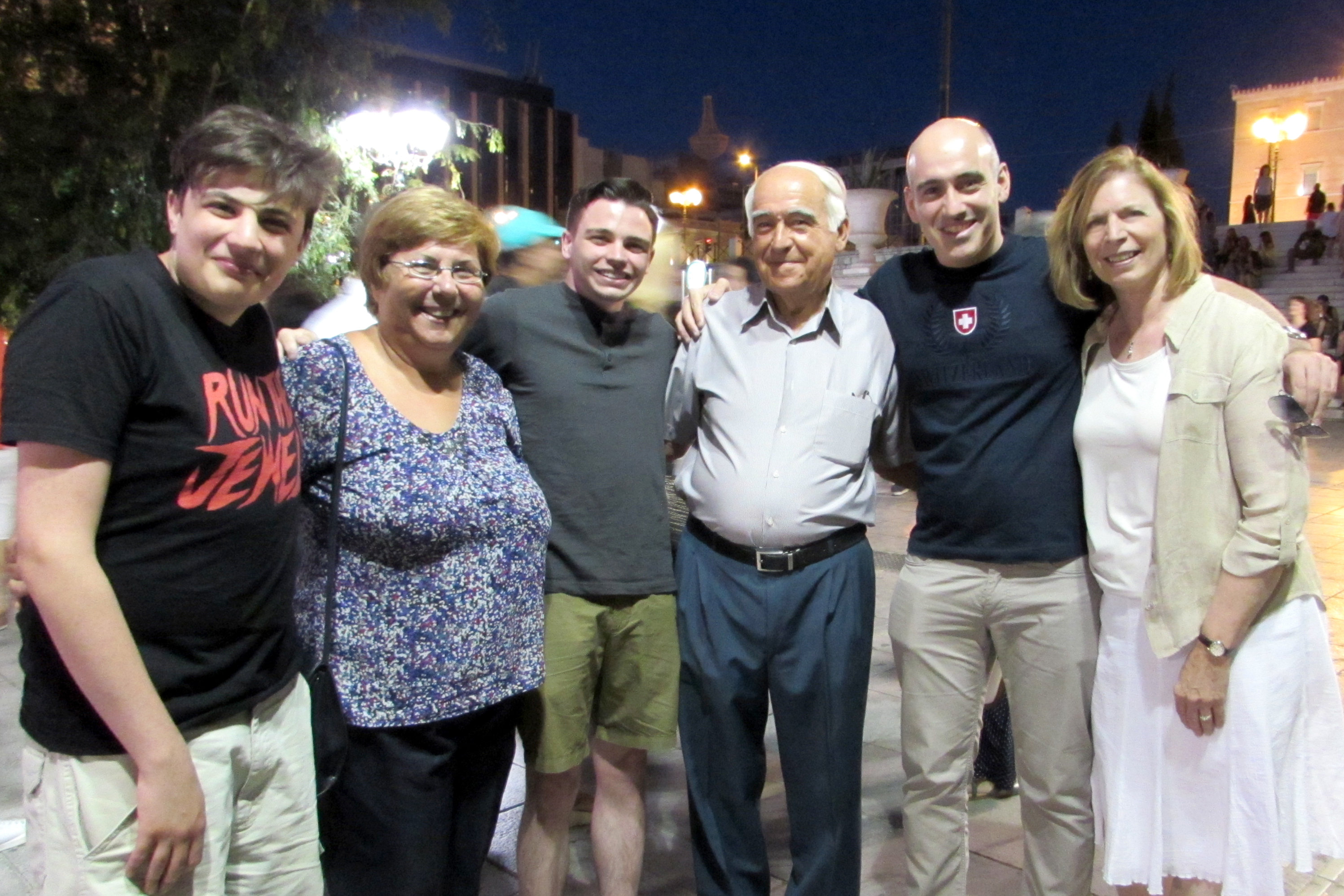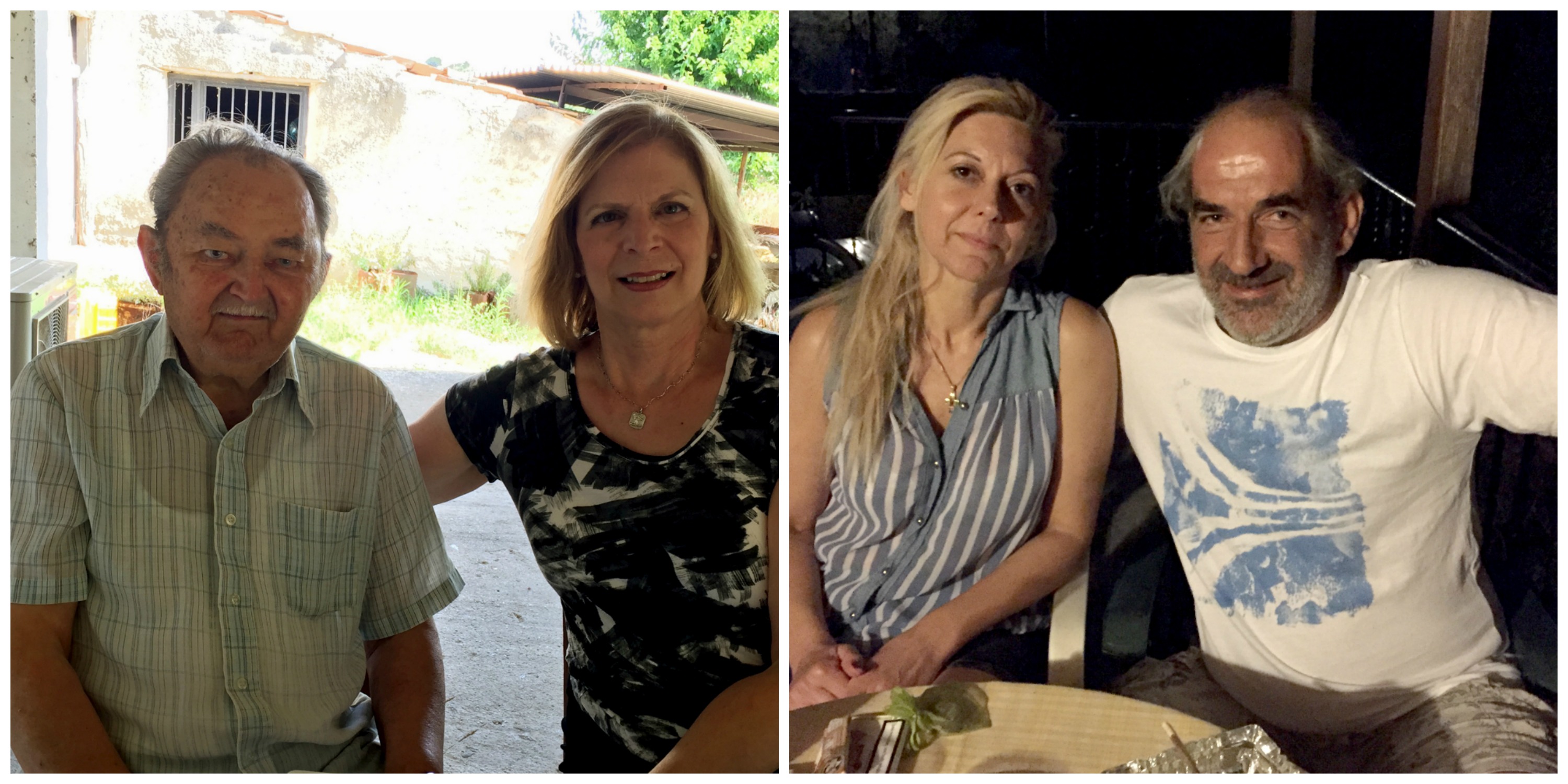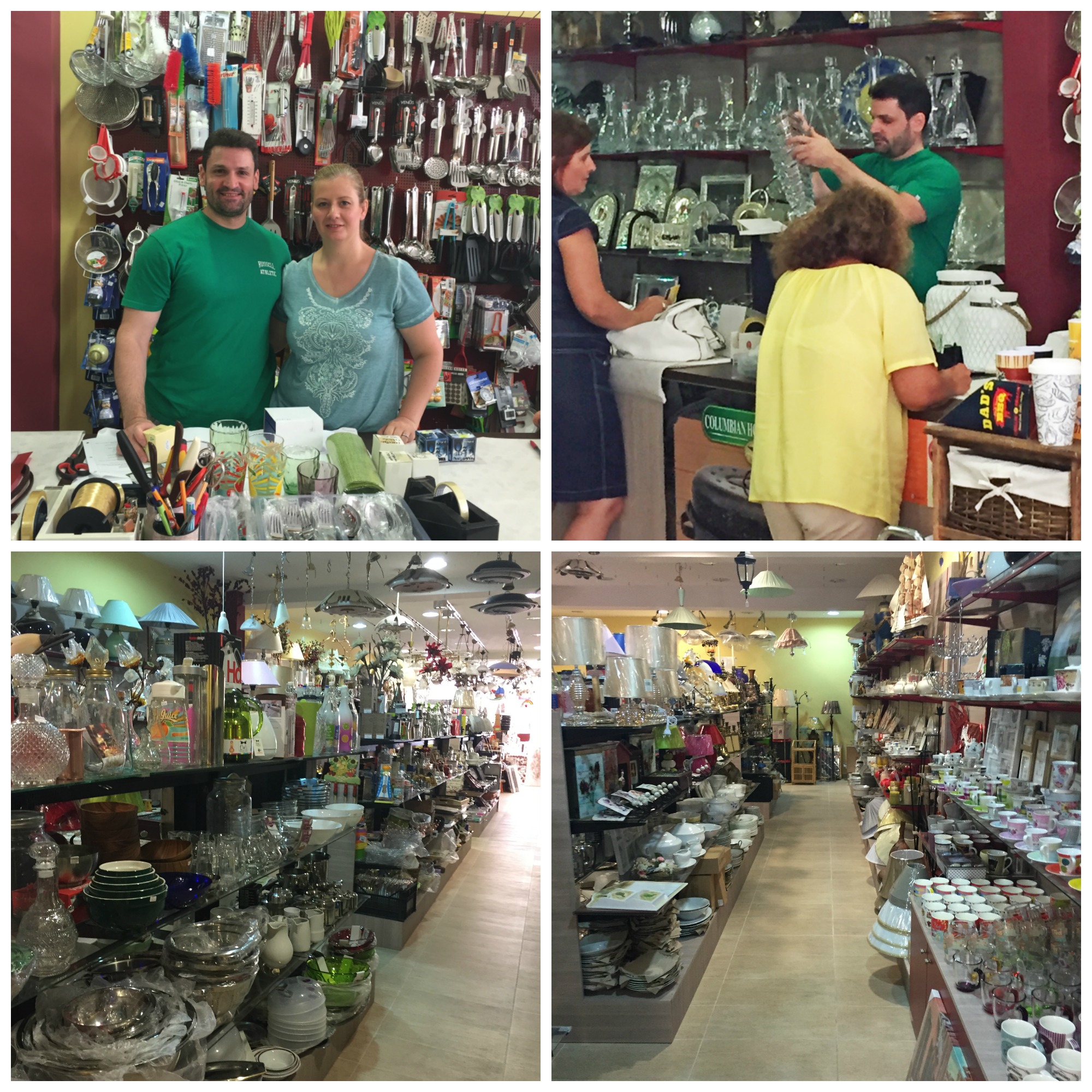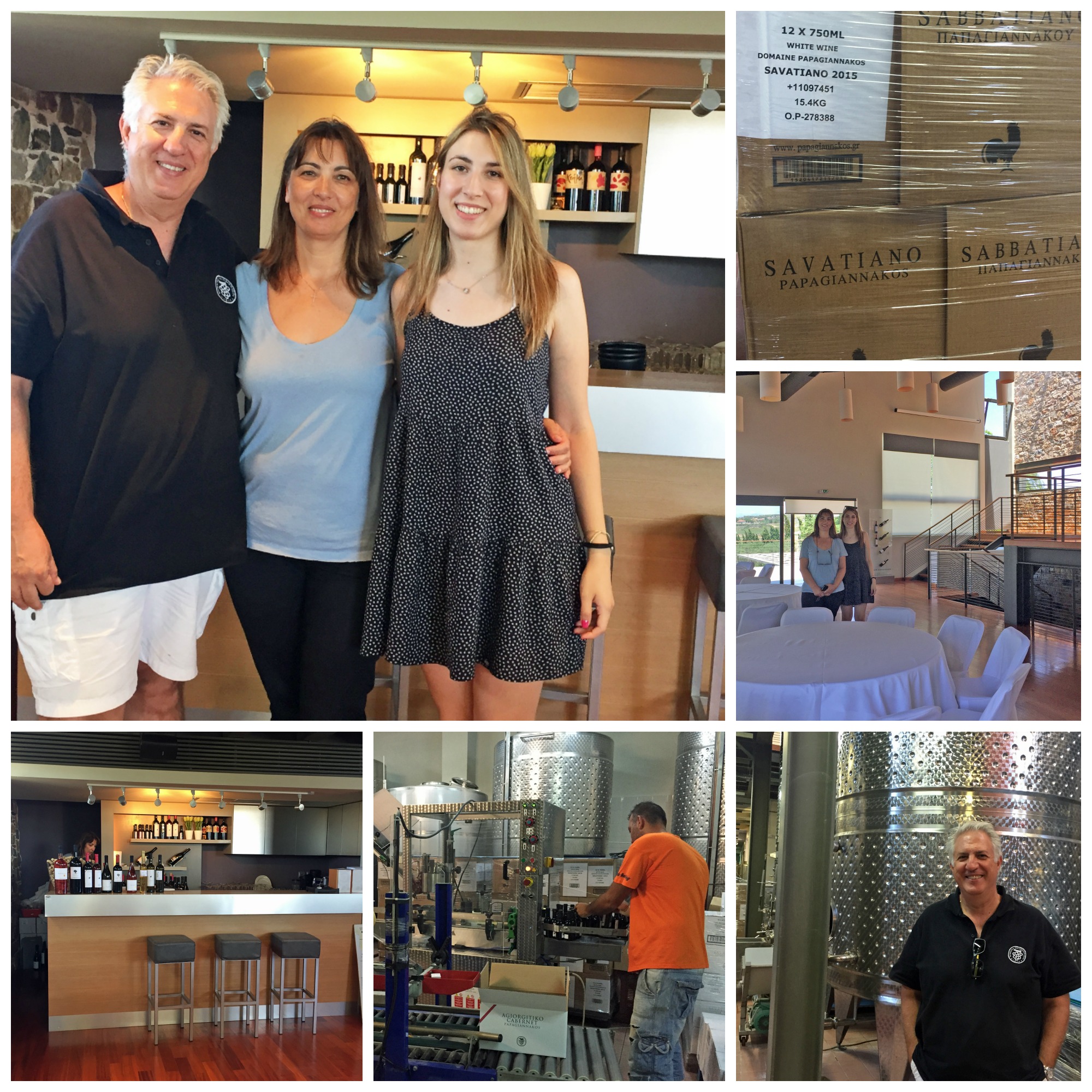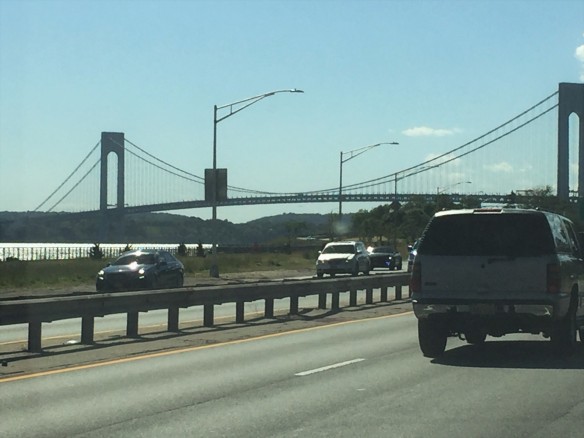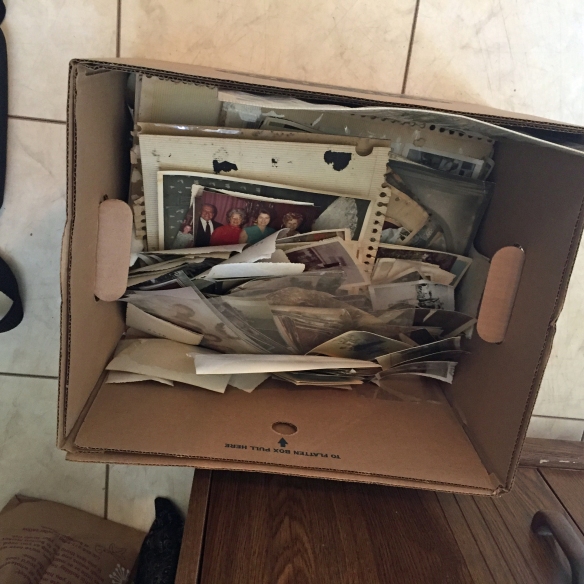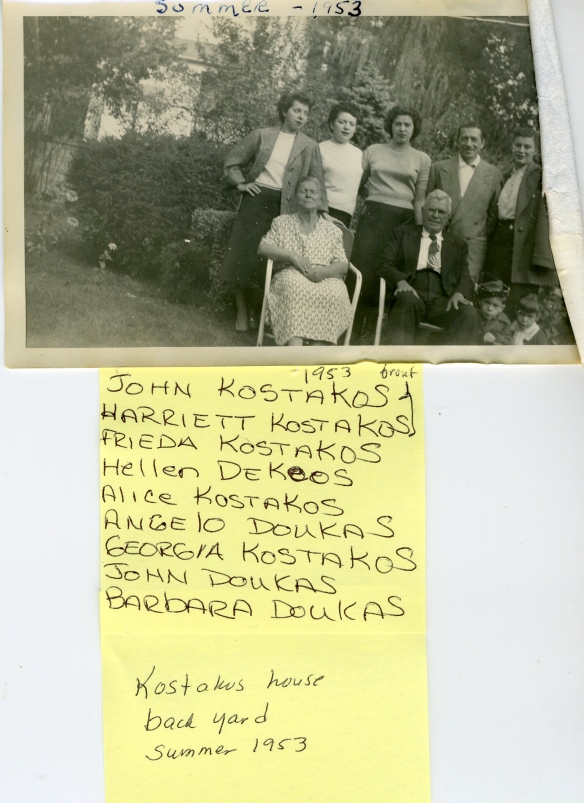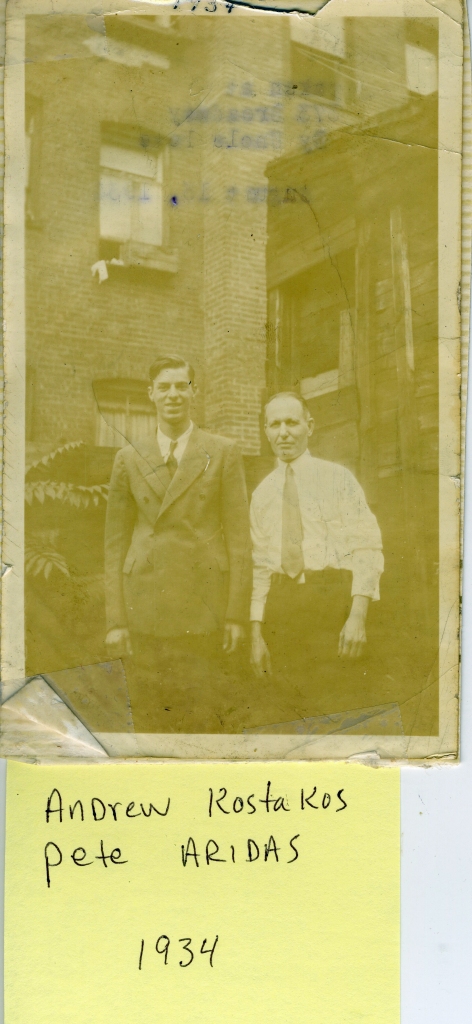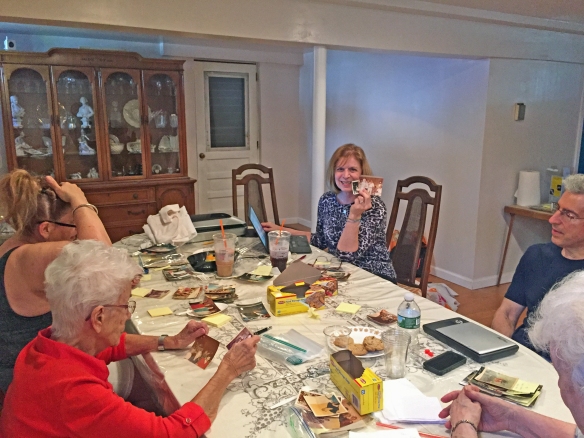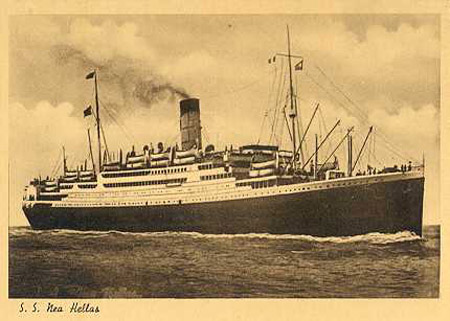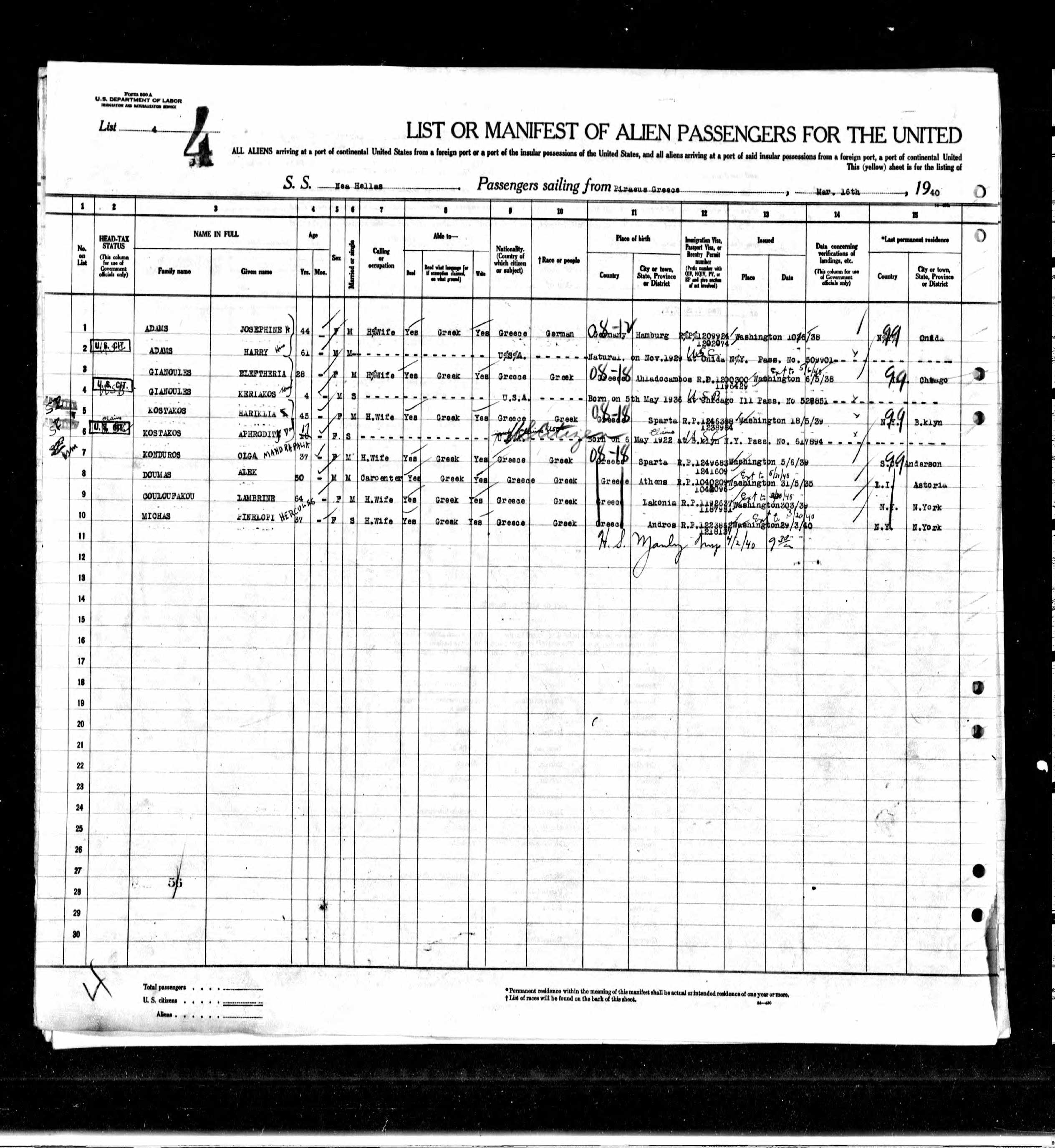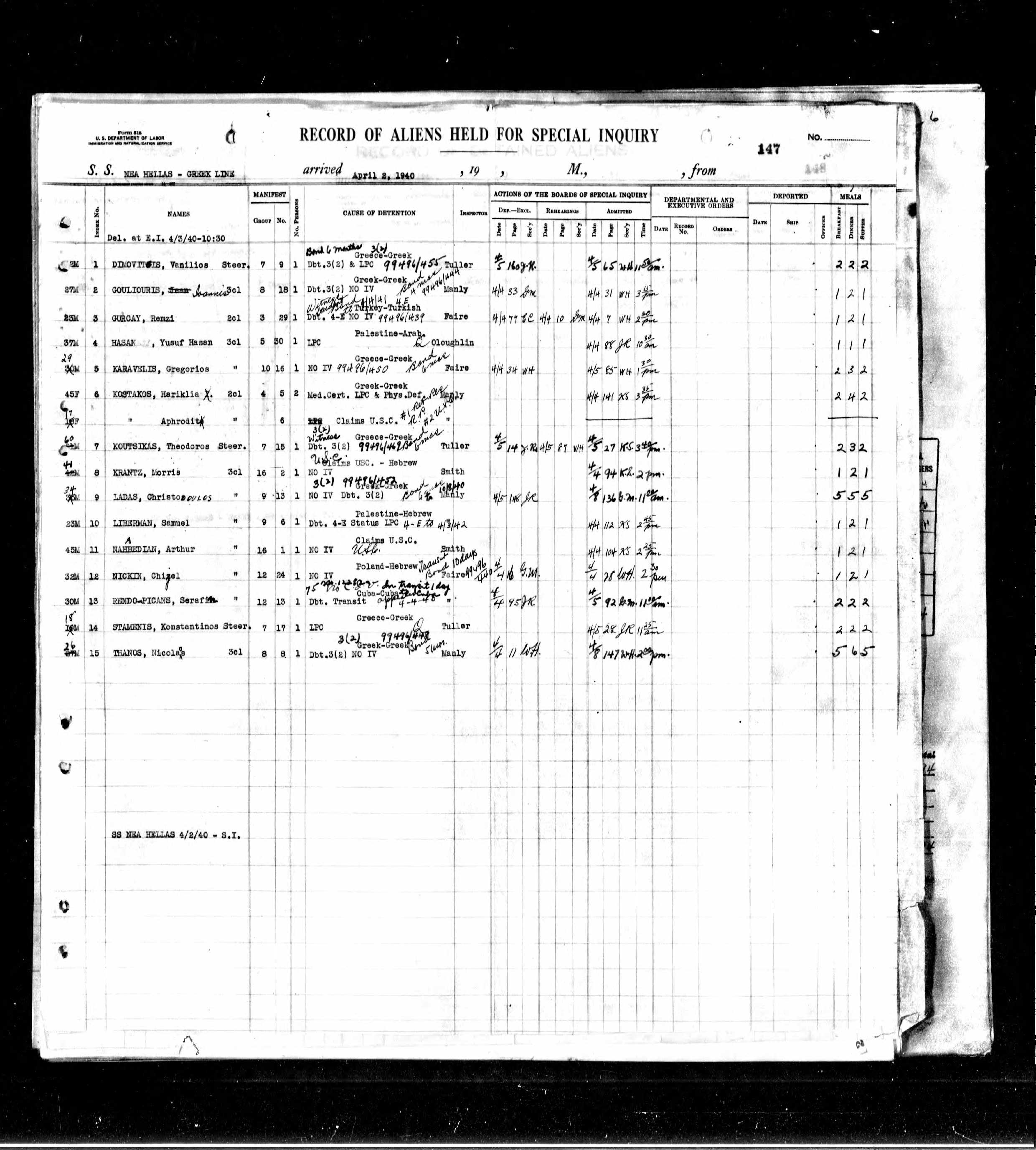My dive into the bewildering world of ever-evolving Greek surnames started in October 2008, when I received this Town Register from the Sparta Archives office:

Agios Ioannis, Dimotologion (Town Register) Family #6, Aridas, page 1 of 2
The first entry, family #6, is the household of Michail Chistos Aridas of Agios Ioannis, relatives of my paternal grandmother, Harikleia Aridas Kostakos:
Aridas, Michail; father: Christos, mother: Gkolfo, born 1867
Aridas, Eleni; father: Dimitrios Liakakos, born 1866
Aridas, Christos, born 1900
Aridas, Eleni; father: Vasileos Karteroulis, born 1877
Aridas, Vasileios, born 1905
Aridas, Panagiotis, born 1910
Michalakakos, Konstandinos, born 1912
Aridas, Anastasia, born 1918
I was surprised to see that Michail had two wives: Eleni Liakakos and Eleni Karteroulis, with their respective children listed under the name of their birth mother. But I was stunned to see the name Konstandinos Michalakakos. Who is he, and why is he in this family? My first thought was that he is a cousin, an uncle, or even a friend living in Michail’s household.
Wrong! He is Michail’s son.
My first lead came from an Aridas relative whose mother visited Agios Ioannis in the 1950s. She was told that Michalakakos was the original name and Aridas had begun as a nickname or paratsoukli (παρατσόυκλι) for an ancestor who had long legs. The Collins Greek-English dictionary verified the translation, with definition (b) leg.
Last summer in Agios Ioannis, one of my Aridas cousins verified that the names were used interchangeably. However, he was certain that Aridas was the original name and Michalakakos (son of Michail) was a spin-off; and that Konstandinos chose to use Michalakakos because that name was “more professional and respectful” in his work as a theologian in Athens.
And there is yet another derivative of the name– “Aridakos” (son of Arida) as shown in this 1875 Male Register: line 3318: Konstandinos Aridakos, son of Christos, and line 3320: Anastasios Aridakos, son of Efthymios.
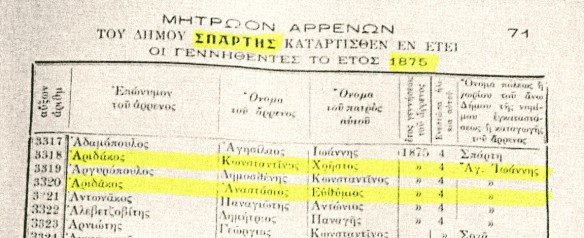
Mitroon Arrenon, 1875, Sparta, Greece.
Question: which name is correct?
Answer: all of them!
And how can that be? Giannis Michalakakos (no relation) remarked: “In Greece, we ask: πως σε λένε; how do they call you?” Those words — πως σε λένε — struck me powerfully, as my mind processed that people are generally asked, “how do they call you?” NOT “what is your name?”
So, a person can reply any way he chooses: call me the son of Michael (Michalakakos), or call me the son of Aridas (Aridakos) or simply, call me Aridas.
Following the paper trail of Michail Christos proves that this practice was customary. He is named Aridas in the Town Register above, in his Male Register, and on his passenger ship record. But in his marriage record of 1903 he designates himself as Michail Michalakakos.

Sparta Mitropolis Marriage Index Book; Sparta: Oct 1899-Sept 1907; page 174; #478: 9 November 1903; Michail Michalakakos and Eleni Vaseleios Karteroulis; second marriage for him; first marriage for her; both from Agios Ioannis, Sparta.
Interestingly but not surprisingly, some of Michail’s children followed his pattern of using whichever name they wanted, whenever they chose.
Aikaterini: (not in the above Town Register): her 1913 passenger ship record uses Aridas; her marriage record uses Mihalakakou and lists her father as Mike Mihalakakon.
Gkolfo: her 1921 passenger ship record uses Aridas; her marriage record uses Mihalakakos and lists her father as Mihael Mihalakakos.
Konstandinos: Male Register uses Michalakakos with a notation regarding a surname change; Agios Ioannis school records use Aridas; Town Register uses Aridas.
Anastasia: Town Register uses Aridas; school records use Michalakakos.
Efrosyni: consistently used the Aridas surname, but this news article reveals that as late as 1950, Michail was known as both Aridas and Michalakakos. (Efrosyni married Nikolaos Revelos):

Efrosyni Aridas Revelos visit to her Michalakakos family in Agios Ioannis
Digging deeper into all members of the Aridas family produced many documents, both Greek and U.S., which verify the interchangeable use of the three names.
This example is a marriage record for Efthymios Michail Michalakakos who is the son of Michail Efthymios Aridas, another branch of the Aridas family in Agios Ioannis:

Mitropolis of Sparta, Marriage Index Book: Sparta, 1866-1872; Year: 1871; Entry #302
License Date: October 30, 1871; Groom: Efthymios Michalakakos; no father listed; residence: Agios Ioannis; Bride: Stamatiki Karnazakou; father: Ilias; residence: Agios Ioannis
Πως σε λένε? You get to choose!
Which name is the original family name? The jury is still out. It is understood that surnames (as are defined today) did not become standardized in Greece until after the 1900’s. Anything before then is fluid, and determined by the practices of each family and its individual members.
Πως σε λένε? I am slowly learning to think like a native Greek. Understanding the culture, the history and the language is vital. And, it lessens frustration and expands acceptation.
This article, published in the National Herald, adds additional insights into this topic:
Demetrios is now Jimmy.
Postscript: November 2, 2019: Since writing this original post, I have learned of two additional reasons for double surnames.
- Children who were raised by people other than their birth parents (known as “soul children”) may have two surnames–their birth surname and their surrogate parents’ surname. These could be children who were orphaned or given up by a parent who could not care for him/her; or a couple may have adopted a child.
- I found a man who appeared to have three surnames when he was called for military service in 1886.*

Hellenic Genealogy Geek Facebook page members clarified that there are only two surnames, Καψής ή Παναναγιωτόπουλος, the soldier’s name is Ανδρέας, and his father’s name is Γιαννάκη ή Παρασκευα. This makes more sense than having three surnames! In summary, don’t be surprised to find alternate names for both the surname and the given name.
An excellent article describing the origin of Greek surnames can be found here.
*Source: this entry is found in the Φ.Ε.Κ. Government Gazette, 1886; location: Faron, Patreon, Achaiolidas (Αχαιοηλιδος Πατρεων Φαρον).









